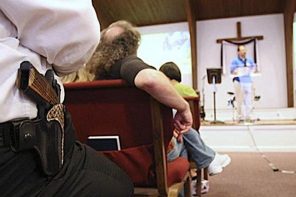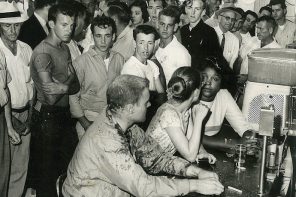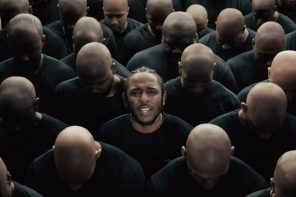Back in May 2008, I made my reservations for the AAR and decided I would stay over for election day. It was the best decision of my life. From the Chicago Hilton Bar and the streets of Chicago, I saw history being made. I shouted and cried not only for the burden that is beginning to lift from our country, but from the burden of teaching the history of African-American religion with a heavy heart semester after semester.
Allow me to explain.
I’m not sure that many of you know the psychic toll it takes on people of color to teach histories that are painful, degrading, and many times, are part of your own family story. Reading slave narratives semester after semester, seeing lynching pictures, reading about dreams deferred—it can take a toll on your soul. Even worse, realizing that no matter how many African Americans created educational, social and religious systems, our collective history always hit a seemingly insurmountable wall to the measure of full success in the United States: The office of president.
A black president seemed to be a pipe dream for us, an on-screen fantasy for actors like Morgan Freeman or Eddie Murphy to tantalize us with. The promises of the founding fathers that whites embraced wholesale seemed hollow, and Malcolm X’s statement that “we (blacks) didn’t land on Plymouth Rock, Plymouth Rock landed on us” seemed oh-too-true. Teaching American religious history was just a reminder of how a religious narrative for others could be simply faith, and for others, a mode of survival, a way out of no way.
Now, I can revisit that history with a fresh hope. I have no illusions that racism is over, or that even the institutions we all teach at will immediately rectify their inherent racial biases and move fully into the twenty-first century. The American populace has spoken, however, and we owe it to ourselves as scholars to take note, and pay attention. Just as much as we need to tell the story of the civil rights struggle, we need to tell the story of those who have resisted these changes in order thwart the creation of a “more perfect Union”.
We must continue to confront some ugly truths in order to get to a full healing. Obama’s presidency is merely a beginning on that journey. Within the first twenty-four hours of Obama’s historic win, I was told story after story by older African Americans I encountered the morning after—including my own father—about the hurtful experiences of Jim Crow and racism they had experienced at the hands of whites. My father, while in the uniform of the United States Air Force, was told to go to the back door of a small diner in Oklahoma in 1956 because he was black. Never mind that he was willing to die for his country, he wasn’t good enough, even in uniform, to eat alongside whites.
So when my students ask me why I tear up, or why I am strident about exposing the harsh history of racism hidden under the guise of “old-time religion,” it is because of folks like my dad and countless others who have endured abuse because of racism.
I can only hope that the sight of President-Elect Obama taking the oath of office on January 20, 2009 will bring another wave of healing the wounds inflicted on so many people of color by America’s exceptionally racist history.
Photo of Obama supporters in Grant park by Flickr user Erica Marshall, under a Creative Commons license.




